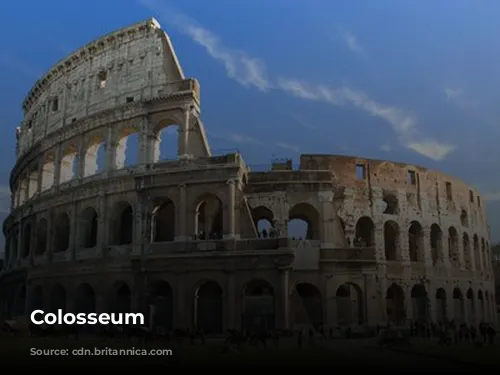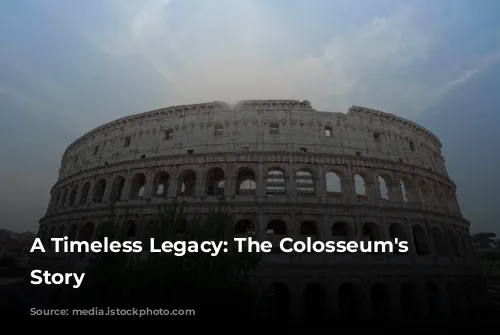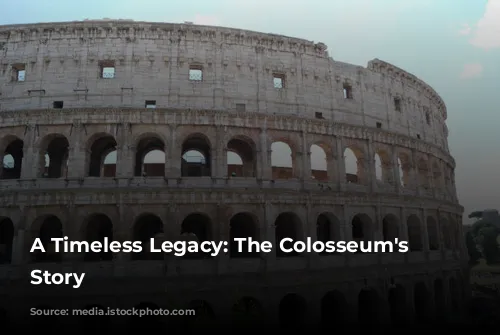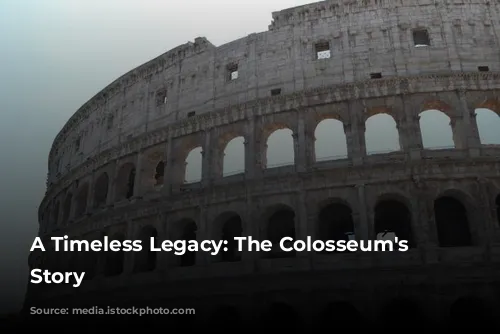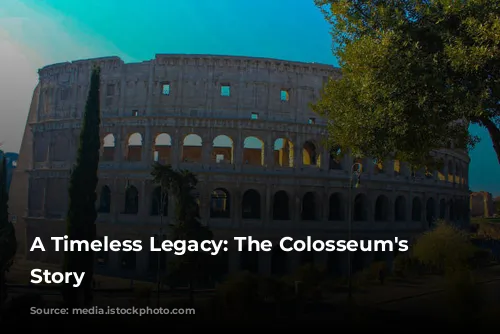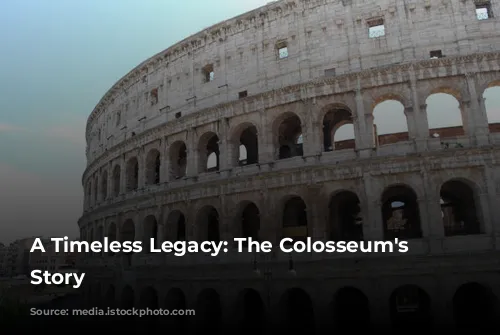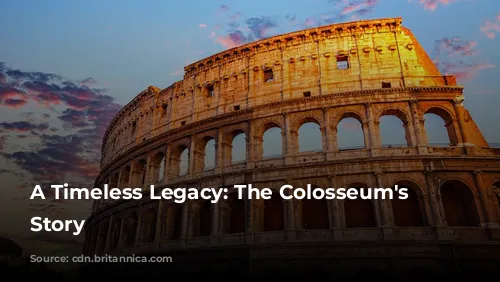The Colosseum, a monumental testament to Roman ingenuity, stands as one of the most iconic structures in the world. It is not only a symbol of the Roman Empire’s architectural prowess but also a major driver of tourism revenue for Italy. In 2018, the Colosseum, along with the Roman Forum and Palatine Hill, generated over $63.3 million (€53.8 million), making it the top tourist attraction in Italy.
From Glory to Neglect: The Colosseum’s Troubled Past
The Colosseum, once a symbol of Roman might, suffered a period of decline after the fall of the Western Roman Empire. In the 12th century, the Frangipane and Annibaldi families repurposed the arena as a stronghold. This marked a significant departure from the structure’s intended purpose. The Colosseum faced further degradation in the 15th century when Pope Alexander VI granted permission for the Colosseum to be used as a quarry. Over a thousand years of neglect took their toll on this once-grand monument. It was not until the 1990s that significant restoration efforts, funded by the Italian government, began to revive its former glory.
A Legacy of Entertainment: The Colosseum’s Purpose
The Colosseum was built as a bold project to revitalize Rome following the turbulent “Year of the Four Emperors” in 69 CE. Emperor Vespasian, like other Roman emperors, saw the amphitheater as a means of entertainment. The Colosseum was envisioned as a grand stage for gladiatorial combat, animal hunts, and even mock naval battles. The spectacle of these events provided entertainment for the masses and served to strengthen the emperors’ grip on power.
Construction and Dedication: The Colosseum’s Genesis
Construction of the Colosseum began under Emperor Vespasian between 70 and 72 CE. The magnificent structure was officially dedicated in 80 CE by Vespasian’s son and successor, Titus, with a grand celebration lasting 100 days. Emperor Domitian, who reigned after Titus, completed the construction by adding the fourth story in 82 CE. It is important to note that the Colosseum was financed by the spoils of war from Titus’s conquest of Jerusalem in 70 CE, and it was built by enslaved Jews from Judaea. This detail provides a somber reminder of the human cost behind the Colosseum’s grandeur.
A Monument of Engineering: The Colosseum’s Design
The Colosseum, also known as the Flavian Amphitheater, is an elliptical structure made of stone, concrete, and tuff. It stands an impressive four stories tall at its highest point and measures 620 by 513 feet (189 by 156 meters). The Colosseum was built with a capacity of 50,000 spectators, showcasing Roman engineering prowess. The Colosseum was renowned for its use in gladiatorial combat.
Location and Symbolism: The Colosseum’s Placement
The Colosseum was built just east of the Palatine Hill, replacing Nero’s Golden House. The artificial lake, the centerpiece of Nero’s palace, was drained to make way for the amphitheater. This location was not only practical but also highly symbolic. Vespasian, who ascended to the throne from humble origins, replaced the tyrannical emperor’s private lake with a public amphitheater for the benefit of the Roman people. This choice reflects the shift in power and the emperor’s desire to connect with the masses.
Design and Structure: The Colosseum’s Architectural Marvel
The Colosseum, unlike earlier amphitheaters carved into hillsides, is a freestanding structure made of stone and concrete. It utilizes an intricate system of barrel vaults and groin vaults. The three lower stories feature arcades adorned with engaged columns in the Doric, Ionic, and Corinthian orders, a design that became a cornerstone of Renaissance architecture. Travertine stone forms the main structural framework and facade, while volcanic tufa is used for the secondary walls. The inner bowl and arcade vaults are constructed of concrete.
Spectators and Spectacles: The Colosseum’s Purpose
The Colosseum could accommodate a staggering 50,000 spectators, who were shielded from the sun by a massive retractable awning known as a velarium. The velarium was supported by masts that extended from corbels built into the top story, and hundreds of Roman sailors were needed to manipulate the rigging. The Colosseum hosted a wide range of spectacles, from gladiatorial combat and contests between men and animals to mock naval battles. However, the claim that early Christians were martyred in the arena remains uncertain.
From Glory to Neglect to Revival: The Colosseum’s Enduring Legacy
During the medieval period, the Colosseum was repurposed as a church and then as a fortress by the Frangipane and Annibaldi families. The Colosseum suffered damage from lightning, earthquakes, vandalism, and pollution. All the marble seats and decorative materials were removed, transforming the site into a quarry for centuries. In the 19th century, preservation efforts began in earnest, led by Pius VIII. Significant restoration work was undertaken in the 1990s. Today, the Colosseum stands as one of Rome’s most popular tourist attractions, welcoming close to seven million visitors each year. Regular exhibitions showcase the rich culture of ancient Rome, keeping the Colosseum’s legacy alive.
The Colosseum, a testament to Roman ingenuity and a powerful symbol of the empire’s grandeur, continues to captivate visitors from around the world. It serves as a reminder of the remarkable achievements of ancient Rome and its enduring influence on our world.


